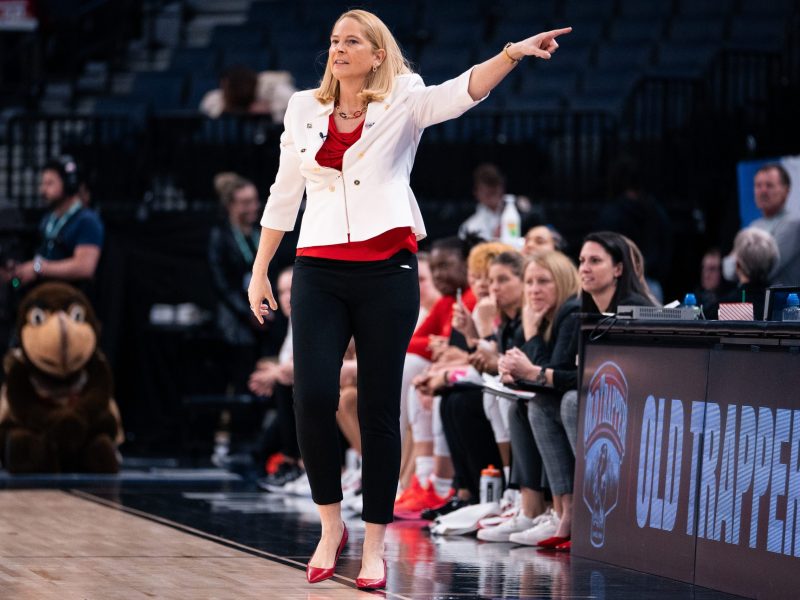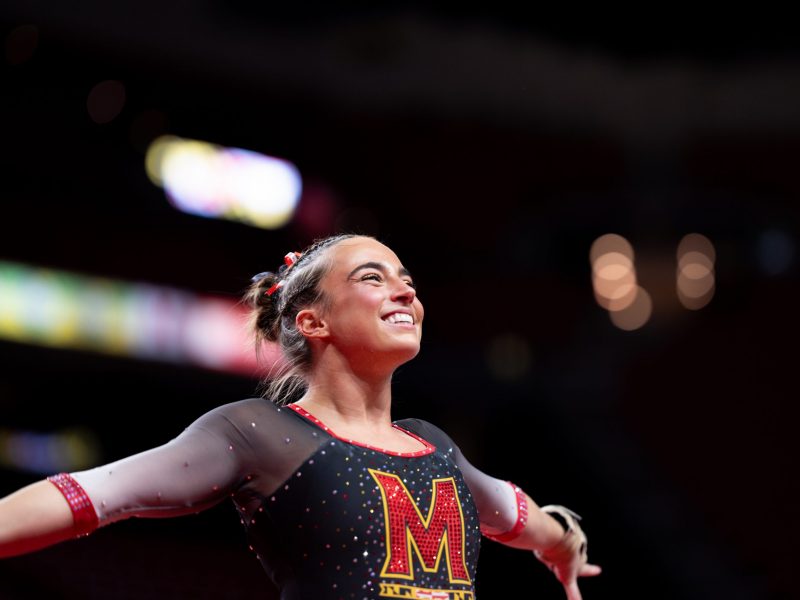Maryland gymnastics found itself in a desperate position. Coach Brett Nelligan’s team sat at No. 37 after a poor bars and beam performance at the Big Five Meet, according to Road to Nationals,.
But the Terps regrouped and are positioned to have a postseason opportunity. Maryland won four straight outings to go undefeated in March. The Terps’ achievements boosted them back into the nation’s top 25.
The key for Nelligan’s team was consistency, and it began with Maryland’s first event. Teams usually begin on vault, but in its last three outings, Maryland started on uneven bars, its lowest ranked unit this year.
The Terps developed a rhythm to move on to the next rotation which set them up for even higher success. They’ve posted their highest total scores of the year in their last three meets.
“I thought that we stayed pretty level headed throughout the day,” Nelligan said. “This point of season, we shouldn’t be getting too overly excited. We shouldn’t be getting too down.”
Maryland averaged 49.325 on uneven bars over its last three competitions. The team’s season-high on the event entering that stretch was a 49.300 in early February. Nelligan said Maryland’s improvement sparked an intensity from the start of the lineup.
[Maryland gymnastics scores a 196.725, earns narrow win over Towson]
The Terps were harmonious in their release moves on bars, which was a big reason for their success. In Sunday’s win over Towson, Victoria Gatzendorfer executed a Maloney, a skill that transitions gymnasts from the low bar to high bar backwards. The junior pushed off the low bar quickly, giving herself more time to spot the high bar. Gatzendorfer was awarded a 9.850.
Sierra Kondo and Alexa Rothenbuescher each exhibited a shoot-over, a release move where gymnasts turn halfway in the air down to the low bar. Both Kondo and Rothenbuescher kept their legs together and toes pointed in transition, eliminating deductions on their overall score. The pair earned a 9.800 and 9.825, respectively.
The Terps also found success in their dismounts. Rhea LeBlanc set up for her dismount in three quick swinging giants. She released from the bar and gained high height, enough to flip twice in a double back layout. The junior then stuck her landing and saluted to the judges for a 9.925.
“I think on bars, when we started sticking dismounts, it carries throughout the entire meet,” Rothenbuescher said. “When you start the next event, sometimes there’s a hiccup but that next routine really keeps you going.”
[Natalie Martin sets program record as Maryland gymnastics wins Temple Quad with a 197.050]
Nelligan’s bar rotation marked a 49.225 over Towson’s first rotation, vault, which earned a 48.975. This built momentum to start the afternoon which was what the Terps needed heading into its second event, vault.
When starting on uneven bars in their last three meets, the Terps finished with a 49.225 or higher. The last time the team started on bars was at the Big Five Meet, where it tallied a 47.825 on uneven bars. Maryland followed up its worst score on the event with an underwhelming 48.800 on balance beam.
The improvement on bars has Maryland in much better shape than it was just a few weeks ago. Nelligan and his team always believed Maryland could be powerful on bars, and it just took a while for the Terps to hit their stride, he said.
“It’s all their hard work,” Nelligan said. “We believe that this is the team. I know from the coaching staff, we believe that this is the team that we could be all the way back in January. We just needed to get them to the point where they believed that too.”



